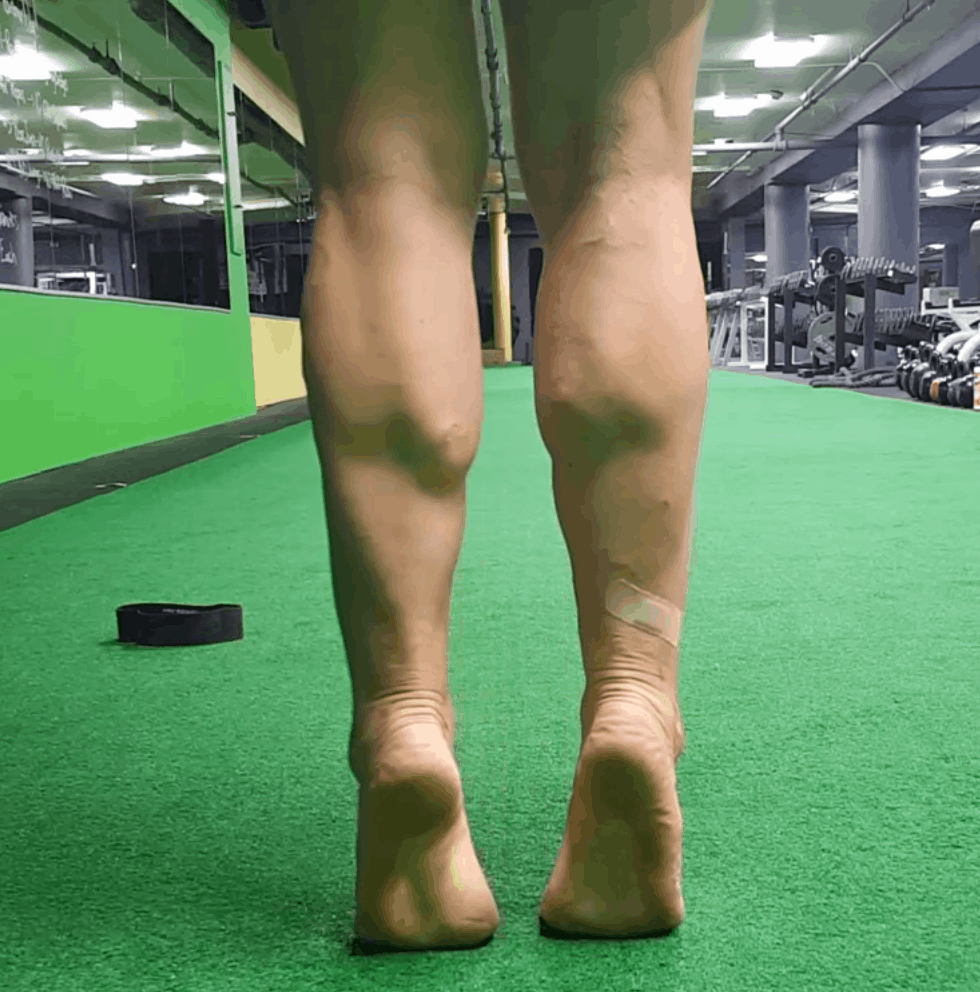
The Tip Toes Test
The tip toes position is an assessment of toes, feet, and ankle control. Balance comes from joint stacking. The push off when we walk comes from a high heel. A toe point or push is required with reaching. Loaded plantar flexion is integral to acceleration. The pattern is used regularly, but is often overlooked when compared to the promoted practice of creating shortfoot. Here, force is put into the floor rather than sliding across it. The higher the heel the more force gets placed upon the front of the foot, demanding considerable extension from the toes and ankles, and the foot strength to hold it all together.
To ensure all toes can actively press into the ground, a heel raise with ball squeeze helps force the 4th and 5th toes to engage into the task. Wall leans gives the toes a better angle in which to grip and propel the heel forward. This horizontal movement gets converted to a vertical one as depicted in the progression below:
Hip extension creates a nice line which the ankles can press into. The swing through helps single leg plantar flexion while the pre-flexion of the opposite hip makes it a bit more difficult.
Lunges provide another option in which to use vectors to enhance joint stability at end range of motion:
Removing bodyweight from the equation can give you a more accurate assessment of how much range of motion each ankle possesses:
The flexion of the knee and hip make most of the stress happen at the ankle. Since the foot is grounded it moves minimally but drives ankle motion. The jerky speed bumps of the ‘in and down’ portion of the circle disappear when I slow the movement down and pin the knee. The brain needs some convincing this little used motion is ok, and the extra torque provides additional tension to offer a stable argument.
Compare this to an open chain version of the exercise where the foot and toes are free to move:
The hip and knee work with the ankle, foot, and toes to create a fuller range of motion (including dorsiflexion).
Since high heeled movements have the least amount of foot in contact with the ground, it makes sense that the ankles are the most vulnerable here. Practicing CARs in this position can make your ankles more resilient AND offer up an assessment of what the limiting factors might be up-leg:
Look at the external rotation of that left leg! (Note the position of the knee). No wonder the rotations on that side are jank and the heel height is limited. It’s the same side I had ACL reconstruction surgery on over 10 years ago.
Being able to move the foot without rotation and lateral movement is just as important as it’s spherical counterparts. Another nifty test of control is trying to invert the foot (sole down to top down) void of leaving the sagittal plane:
A final display of tip toe function is expressed through dynamic stability. When comfortable and confident in the range of motion you can control, try out some more aggressive work in a simplified environment before embarking on unknown terrain:
TO REVIEW:
- Getting the heels high demands significant toe and ankle extension
- To balance, the joints need to stack
- Using a forward vector creates maximal use of the toes
- Heel height is followed by kept height with added rotation and lateral movement
- Knee bent position can aid in maximal heel height
- Loaded plantar flexion leaves the ankles vulnerable and requires more from the feet, calves, and toes to maintain position
- CARs from the tip toes both assesses function and improves joint integrity
- Unloaded, loaded, and dynamic movements all have a place in training



